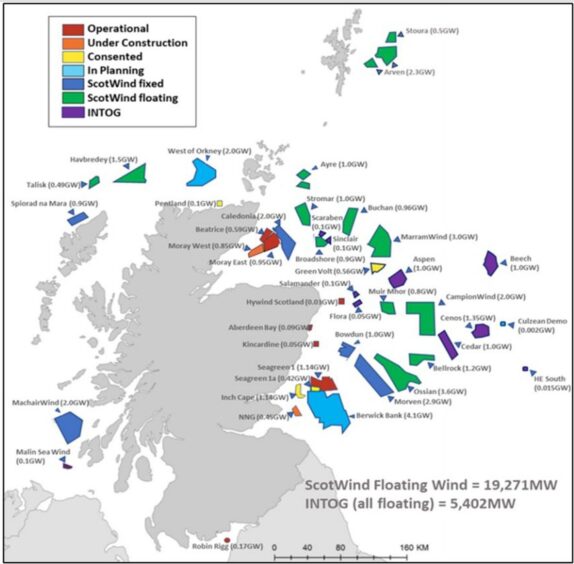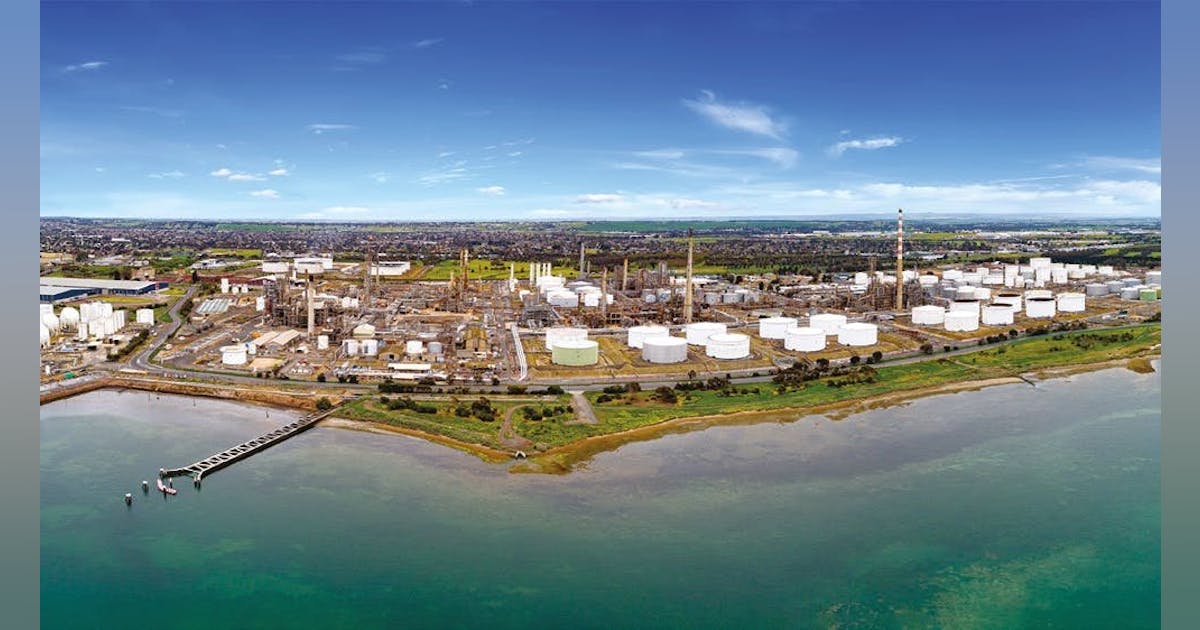ScotWind and the Innovation and Targeted Oil and Gas (Intog) leasing round will deliver nearly £100 billion in offshore wind investment, Crown Estate Scotland (CES) has claimed.
There were 20 projects licenced as part of ScotWind in 2022, which are set to deliver £78.5bn over the next 10 to 15 years, while the 13 Intog winners bring £17.6bn, according to the seabed owner’s latest figures.
The owner of Scotland’s seabed further claimed that the £96.1bn of investment coming from the offshore wind projects could support 21,200 jobs and generate £15.7bn gross value add (GVA) annually to the country.
It accounted for between £28.6 and £34.8bn in contracts being awarded to Scottish firms for Intog and ScotWind projects.
 © Supplied by Crown Estate Scotlan
© Supplied by Crown Estate ScotlanCES chief executive Ronan O’Hara, said: “This new report captures both the huge impact Crown Estate Scotland’s work is already having in supporting key industries throughout Scotland, as well as underlining the massive potential for us to help secure close to £100bn in further investment in the renewable energy sector.”
Operation and maintenance (O&M) work related to the Intog and ScotWind rounds is also set to benefit local businesses.
CES estimates place the value of M&A work at between £698m and £772m alongside a forecast 9,500 and 10,600 jobs.
Renewable energy ‘developing rapidly’
 © Supplied by Offshore Wind Scotla
© Supplied by Offshore Wind ScotlaThe report by Biggar Economics ultimately concluded that Crown Estate Scotland, across all activities, could deliver an economic impact of £2.1bn while supporting almost 17,000 jobs.
The organisation manages the Scottish Crown Estate, which covers 50% of the foreshore and seabed out to 12 nautical miles (nm); around 35,000 hectares of land across four rural estates, and minerals rights across much of Scotland.
“We have the capability and business model to create long-term wealth for the people of Scotland and now is the time to unlock and realise this potential,” O’Hara added.
“Farming, aquaculture, CCS, and above all renewable energy are sectors developing rapidly, and we are well placed to play a pivotal role in helping to make Scotland a green energy powerhouse and secure a sustainable, low-carbon future for Scotland, the UK and the wider world”.
Concerns raise about Scottish wind delays
Despite the positive noises coming from the seabed owner, industry has recently raised concerns regarding the future of offshore wind development in Scotland.
The ongoing debate around zonal pricing for electricity has prompted Scottish Renewables boss Claire Mack to warn that the initiative “risks derailing” projects.
She recently said: “As we ramp up the delivery of clean power projects across Scotland, zonal pricing has become a dangerous distraction which risks derailing these vital new developments for energy security.
“Any theoretical benefits of zonal pricing have not been convincingly demonstrated and would take at least seven years to deliver.”
 © Supplied by ScottishRenewables
© Supplied by ScottishRenewablesDevelopers in Scotland are expected to build over 45GW of offshore wind in Scottish waters, largely through the ScotWind leasing rounds and Intog.
Additionally, support from a Scottish and UK government level has been asked for by one Intog project leader.
Quicker consenting times from Holyrood and improvements to funding rounds from Westminster are what Salamander project director Hugh Yendole called for at last year’s floating offshore wind conference in Aberdeen.
Industry has been clear that the smaller Intog offshore wind projects must be delivered at pace in order to build supply chain expertise and readiness for ScotWind’s larger gigawatt-scale initiatives.
Certainty and clarity for project leaders will ultimately determine how quickly projects are delivered and that will determine economic gains for Scotland, the UK and the wider offshore wind sector.






















